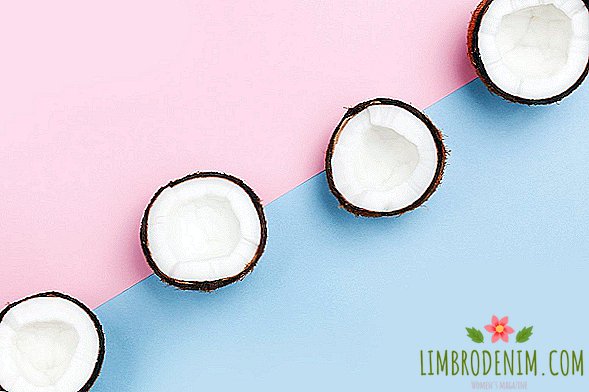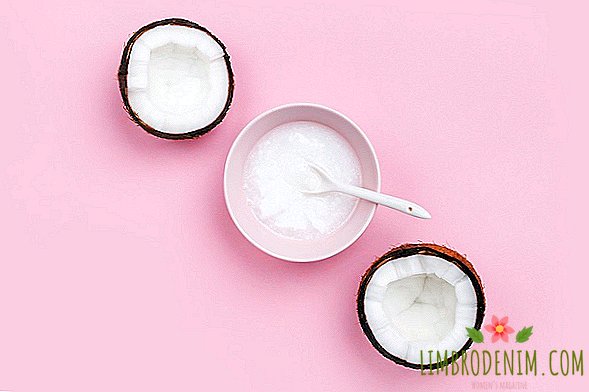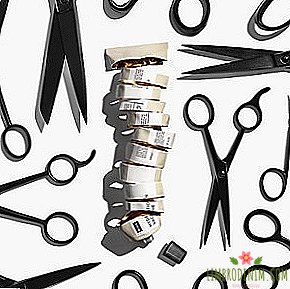Superfood or poison: Can coconut oil be harmed?
Over the past years, coconut oil has acquired the title of "superfood" - on the issue in the search engine and it may seem at all that it will save from any illness. The possibilities of application are endless: you can find tips on how to brush your teeth with oil, replace the moisturizer with it and, of course, diversify the diet.
On the other hand, nutritionists often oppose the frequent consumption of coconut oil for food. So, quite recently, Harvard epidemiologist professor Karin Michels, giving a lecture at the University of Freiburg, said that "coconut oil is pure poison." Video from her lecture watched hundreds of thousands of people, news sites around the world sounded the alarm. But is the notorious "superfood" really dangerous? Let's try to figure out whether we should give up coconut oil forever or have any benefit from it.

How are fats
Fat molecules in their form resemble jellyfish: “head” is glycerin, and “tentacles” are fatty acids. Fatty acids are long chains of carbon atoms with hydrogen atoms looking outward. Each carbon in such a chain can maintain a chemical bond with two hydrogen atoms. Sometimes only one hydrogen atom is attached to carbon, and then a second chemical bond between the carbons appears. It changes the angle of the chain and the distance between the fatty acids inside the molecule, the neighboring molecules are also farther from each other.
Double bonds also affect whether the fatty acids are saturated or not. Those in which there are exclusively single bonds between carbon are called saturated, and those in which the double are present are unsaturated. Depending on where in the chain the double bond is located, a special name is assigned to the fatty acid. So "omega-3" means that it is after the third carbon from the end of the fatty acid "tail".
The ratio between saturated and unsaturated fatty acids affects the physical properties of the oil, primarily the melting point. Thus, animal fats for the most part consist of saturated fatty acids, which remain solid at room temperature, and liquid vegetable oils, on the contrary, from unsaturated. Our body can produce saturated fatty acids for energy storage, but at the same time it needs two unsaturated acids: linoleic (omega-6) and alpha-linoleic (omega-3) fatty acids. Both are found in most vegetable oils.
How to make coconut oil
From a botanical point of view, coconut is not a nut at all, but a drupe. The latter include, for example, cherries and apricots. They consist of three layers: the outer shell - the exocarp, the pulp - the mesocarp, and the hard shell around the seed - the endocarp. The coconut mezocarp is dry and fibrous, unlike other fruit of the drupes. For sale in Russia, often the exocarp and most of the mesocarp are removed, leaving a solid brown seed - this is the very "hairy coconut" from the Bounty commercial.
The seed under the brown shell consists of two basic elements: white fleshy pulp and translucent liquid - solid and liquid endosperm, respectively. The endosperm is a source of starch, proteins and fats and is necessary to provide the future plant with nutrition. When the fetus ripens, the liquid endosperm thickens, becomes more oily and becomes yellowish-milky in color. In a fully ripe coconut, the liquid hardens and only one type of endosperm remains - coconut pulp.
Coconut oil is produced from mature coconut pulp using cold or hot pressing. With cold crushed chips, they are simply squeezed out: this method allows you to extract only one tenth of the total oil content, but the resulting product is more pleasant to taste and much closer to the actual coconut in composition. When hot, the fruit is treated thermally, drying in the oven or in the sun. It is the second method that is often used in the food industry, since it allows using coconut as efficiently as possible.
The composition of coconut oil
Unlike other oils, coconut 80-90% consists of saturated fat, which allows it to remain solid at cold and room temperatures. Interestingly, in regular butter, the content of saturated fat is much less - "only" 51%. In the composition of coconut lauric fatty acid prevails; it also has myristic (there is a lot of it in butter) and palmitic fatty acids (hello to palm oil). In this case, all three are saturated.
Unsaturated fatty acids in it are extremely small: unlike most vegetable oils, coconut is a poor source of linoleic and alpha-linoleic acids. At the same time, despite the fact that the physical qualities of coconut oil resembles fats of animal origin, it does not contain cholesterol. It was precisely because of such a specific composition and the fact that coconut oil is very different from its plant counterparts like olive and sunflower, and there was a discussion about its benefits.

Spore over fat
On the one hand, for the past several decades, nutritionists have suggested that an increased amount of saturated fat in the diet may adversely affect the health of the heart and blood vessels. The American Heart Association, for example, recommends eating no more than thirteen grams of saturated fat, which corresponds to about one spoonful of coconut oil per day. Interestingly, the scientific work that initiated the "war against saturated fat" in the second half of the last century did not contain experimental evidence and was largely based on assumptions.
In subsequent years, it turned out that the risk factor is not so much the total cholesterol content, but rather what lipoproteins (substances that transfer cholesterol between the liver and other organs) it contains. This is how the idea of "bad" and "good" cholesterol appeared: the "low" is called low-density lipoprotein (LDL), and the "good" - high-density (HDL). A high content of LDL in the blood increases the risk of cardiovascular diseases, and HDL, on the contrary, lowers it.
In 2015, Harvard University conducted a study showing that replacing saturated fats with unsaturated fats in the diet affects heart health more favorably than replacing them with refined carbohydrates that are contained, for example, in white bread and soda. At the same time, the main component of palm oil, lauric acid, on the one hand increases the concentration of "good" cholesterol in the blood, on the other - increases the amount of "bad" cholesterol. There are no studies indicating which of these factors is more significant.
Interestingly, the peoples in whose diet coconut oil plays an important role (for example, residents of the New Zealand territory of Tokelau), there are no problems with the cardiovascular system. Despite the fact that 60% of the calories they consume come from coconut products, the level of health of these people remains very high. However, in all such cases, the question arises of what role other factors play - for example, genetics and physical activity - and whether there is something in this equation that blocks the negative effects of eating saturated fat. However, there is still no scientific evidence that coconut oil is a "pure poison".
Everything is good in moderation
The main problem in the debate about coconut oil is that this product has been little studied - after all, it won global popularity not so long ago. Although many of the beneficial properties attributed to coconut oil are often not scientifically valid, some things can already be said with certainty. For example, coconut oil has antiseptic properties and, when applied to the skin, can help get rid of bacteria and fungi. Another useful quality is maintaining the lipid barrier: for someone it can replace a moisturizer or a product for dry hair.
As for food, in theory, the use of coconut oil can lead to health problems, but we still do not know how serious. As with many other products, especially the so-called superfoods, you must follow the measure and check all the information. There is no reason not to use coconut oil in small quantities, but it seems that a full transition to it may not bring positive results.
Photo: juliasudnitskaya - stock.adobe.com (1, 2)





